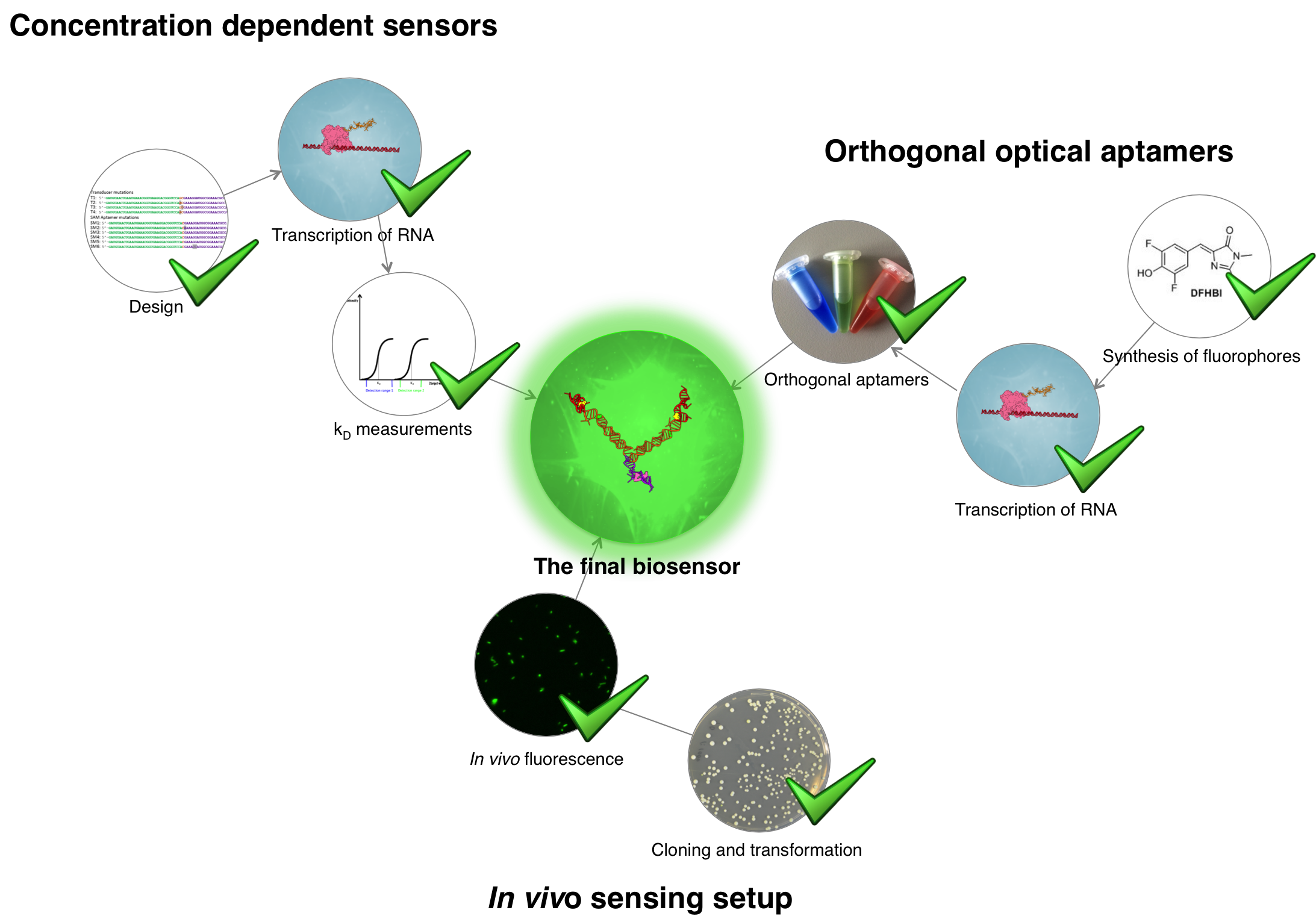Conclusion and Outlook
During the BIOMOD project new sensor constructs were designed and tested. We found that mutation of the Spinach-SAM construct's linker region were able to modulate the Kd value of the complex. Two such constructs were identified. By combining these, a sensor with a broadened dynamic range was achieved. Furthermore the Mango-TO3 aptamer-fluorophore complex was found to be orthogonal to the Spinach-DFHBI complex, making it a viable internal standard for monitoring the transcription level in vivo. A full construct consisting of the two sensor complexes and the internal control was designed but not assembled. In vivo validation of the unmodified Spinach-SAM sensor was performed creating a platform for testing the new sensor complexes.Future experiments will focus on producing and analyzing the full construct both in vitro and in vivo. Creating new SAM-sensors to increase the span in Kd values is of major interest as this broadens the dynamic range further. We imagine that expanding the system to enable simultaneous detection of several species in vivo would be highly relevant. This could be achieved by fusing the Mango aptamer with a small molecule detecting aptamer and using it in conjunction with a Spinach sensor.
Goals reached
All of the subgoals were reached during our project, however, construction and testing of the final construct was not performed due to time limitations. A schematic overview of the achievements is presented below.